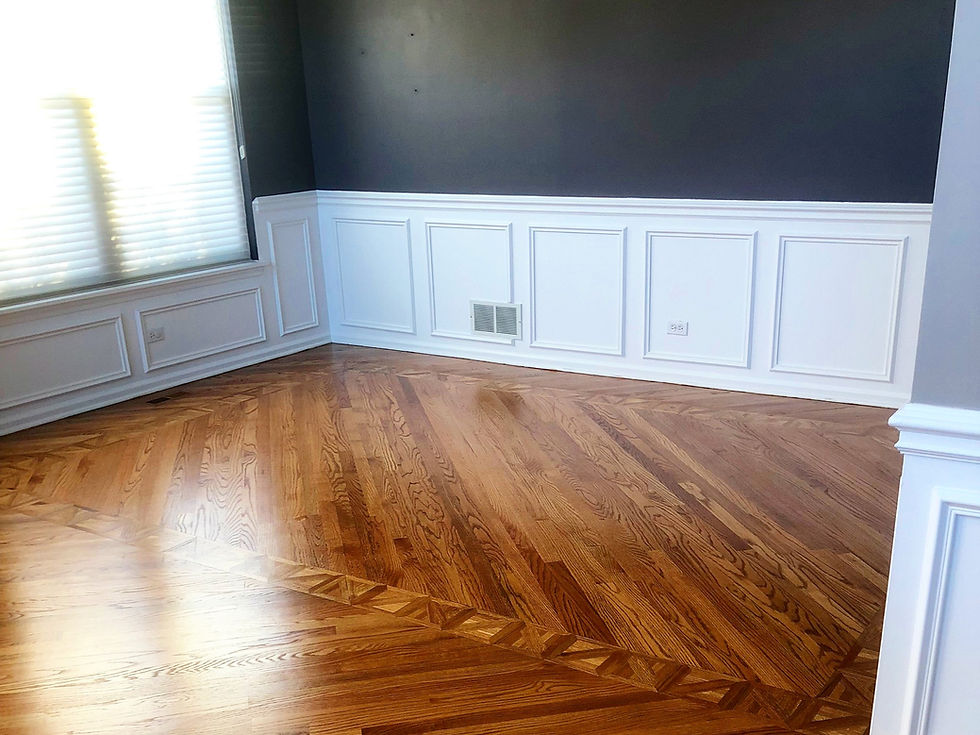Unveiling the Art of Staining and Finishing Hardwood Floors
- Espinosa Hardwood Floors Inc.

- Aug 22, 2023
- 3 min read

When it comes to creating captivating interiors, few elements match the timeless allure of hardwood floors. The rich, natural beauty of wood has been cherished for centuries, enhancing homes with warmth, charm, and sophistication. However, the journey from raw wood to a finished masterpiece involves more than just installation; it's an art that involves understanding the unique characteristics of various wood species and how they interact with stains and finishes. In this exploration, we delve into the world of hardwood floors, hardwood installation, and hardwood floor sanding, uncovering the fascinating relationship between different wood types and the techniques used to bring out their inherent beauty through stains and finishes.
Understanding the Palette: Different Wood Species, Different Personalities:
Every wood species possesses its own distinctive personality, from the rich, dark tones of walnut to the light, airy hues of maple. These inherent traits play a pivotal role in how each species accepts and reacts to stains and finishes. The key lies in understanding the wood's porosity, grain pattern, and color undertones.
Porosity:
Some woods are more porous than others, meaning they have more open pores that readily absorb liquids. Red oak, for instance, has a relatively open grain structure, making it an excellent candidate for accepting stains deeply. In contrast, tight-grained woods like maple or cherry have less porosity and may require specific techniques to achieve even staining.
Grain Pattern:
The grain pattern of wood is another critical factor that influences staining and finishing. Woods like oak or ash, with pronounced and distinctive grain patterns, can create captivating effects when stained, as the stain emphasizes the natural undulations of the grain. Species like hickory or pine, with more subtle grain patterns, can lend a more uniform appearance.
Color Undertones:
Each wood species has unique undertones that can affect the final color achieved with staining. For example, red oak tends to have warm undertones, while maple has cooler undertones. These undertones can alter how the stain interacts with the wood's natural color, resulting in nuanced variations.
Crafting the Canvas: Stains and Finishes Unveiled:
Stains:
Stains are like an artist's palette, allowing you to imbue wood with the desired color and depth. They can range from light to dark shades and can be oil-based, water-based, or gel-based. When applying stains to different wood species, it's crucial to consider the wood's porosity and undertones. Applying a pre-stain conditioner to less porous woods can help achieve a more even stain application. Experimenting with sample pieces is a prudent approach, as the same stain can appear vastly different on different woods.
Finishes:
Once the wood is stained to perfection, finishes step in to provide protection, durability, and that coveted lustrous sheen. Finishes can be categorized as penetrating finishes (like oils) or surface finishes (like polyurethane). The choice of finish impacts not only the aesthetic but also the maintenance requirements of the hardwood floor.
Mastering the Art: Hardwood Floor Sanding:
Before staining and finishing, proper hardwood floor sanding lays the foundation for a flawless result. Sanding levels the surface, removes imperfections, and opens up the wood's pores to enhance stain absorption. However, not all wood species respond the same way to sanding. Softer woods like pine or cedar require gentler sanding to prevent over-sanding, while harder woods like oak can withstand more aggressive sanding to achieve a smoother surface.
The journey from selecting the right wood species to the final stages of staining, finishing, and sanding is a symphony of craftsmanship and artistry. Each step requires a deep understanding of the wood's unique characteristics, as well as the techniques that can unlock its inherent beauty. As you embark on your hardwood floor installation or restoration project, remember that every wood species has its own story to tell, and by mastering the art of staining and finishing, you're preserving and enhancing that story for generations to come. So, whether it's the luxurious warmth of mahogany, the rustic charm of pine, or the classic elegance of oak, the world of hardwood floors is yours to explore, refine, and elevate through the transformative power of stains and finishes.




Comments